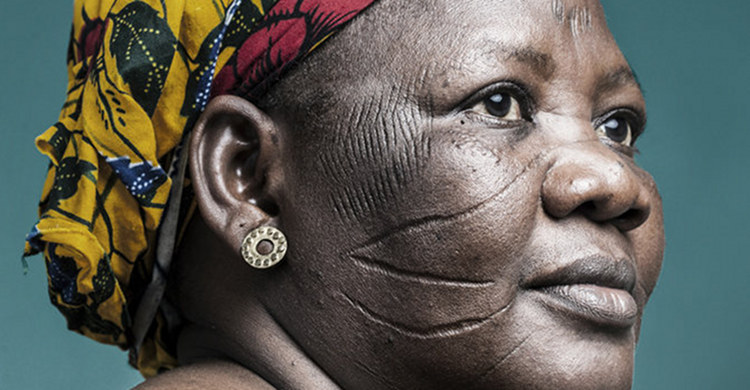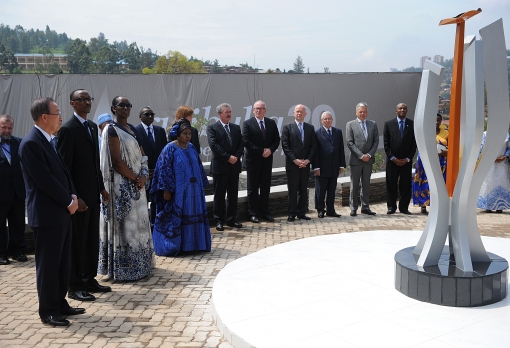 To follow the opinion editorial on South-Sudan’s tangled crisis, authored by Nesrine Malik, here we publish another opinion with a more in-depth analysis that places the current political crisis in South Sudan within a historical context.
To follow the opinion editorial on South-Sudan’s tangled crisis, authored by Nesrine Malik, here we publish another opinion with a more in-depth analysis that places the current political crisis in South Sudan within a historical context. In every society there are political struggles. However, when there are large reserves of petroleum and other resources these political struggles take on added dimensions and become regionalised and internationalised. On the very day that Nelson Mandela was interred in South Africa, the celebration of the life of the great African freedom fighter was not yet finished when the news came from Juba, South Sudan, on fighting and violence. This violence has since spread with over 180,000 displaced persons and more than 1,000 reported deaths. The quick intervention by the Intergovernmental Authority on Development (IGAD) and the African Union pointed to the urgency to contain such militarized political struggles in Africa that could provide room for mischief by external forces.
The ongoing talks in Addis Ababa must be the basis for a credible ceasefire and the disarming of the factions. Peace activists internationally must expose the duplicity of foreign forces that are covertly supporting this militarized disruption of the newest African state. When the violence broke out in Juba, the western media went into overdrive to depict the political struggles as “tribal” all the while these forces had direct foreknowledge of the forward planning for war in South Sudan. Not far behind these journalists were the humanitarian entrepreneurs who felt that they had not profited from the investment they had made in the support for the South Sudan independence. These same humanitarian entrepreneurs are using the discourse of state failure. Thus, a brief historical account is here necessary to reconstruct how the militaristic past influences the political struggles of the present. In the recent past, the strategy of talking while fighting has only served the arms merchants and the humanitarian entrepreneurs. In this submission there is an attempt to place the political and military struggles in South Sudan in an historical context. In the conclusion there is the call for vigilance and commitment from the African Union to ensure that this political conflict does not take any more lives unnecessarily.
BACKGROUND TO THE RECENT POLITICAL STRUGGLES
In 1955, just a year before Sudan became independent from Britain/Egypt, some members of the Sudanese army mutinied in the town of Torit in what is now the Republic of South Sudan. The mutiny led by Southern Sudanese soldiers was fuelled by fears that politicians from Northern Sudan political parties would lay exclusive claim to the spoils of a post-colonial state and exclude the Sudanese citizens from the South. Indeed, when independence came in January 1956, those who had struggled for self-determination against British colonialism did not believe that their brothers and sisters in the Southern part of the society deserved to be free from all forms of oppression and chauvinism. The distribution of political power in the new state confirmed those fears: British colonial power was replaced with political power based in the centre and northern parts of the country. The mutiny spread quickly, turning into a rebellion that lasted until 1972. This rebellion, known as “Anya-nya,” mobilized the peoples of the South, regardless of ethnicity and religion.
After 17 years of war, a power sharing agreement with President Jafaar-el-Numeiry was reached in the Ethiopian capital, Addis Ababa, in 1972, bringing to an end this first war. The Addis Ababa Agreement was short-lived as the Sudanese central government revoked the autonomous status of the South in 1983. This revocation came in a context of increased oppression all over the Sudan. That same year, in the town of Bor, the capital of the present Jonglei State, an army officer and former member of the Dar es Salaam School of thought, Colonel Dr. John Garang, mutinied and escaped to Ethiopia with many of his soldiers, mainly from Southern Sudan. The second mutiny led to the second civil war that lasted until the Comprehensive Peace Agreement was reached in 2005. At that moment, it was agreed that after six years there would be a referendum where the peoples of South Sudan would decide whether to be part of the larger Sudan or seek independence. A lengthy article last year revealed the extent of the machinations of “The Wonks who sold Washington on South Sudan.” [1] What this long and detailed article on the role of the humanitarian lobby failed to bring out was the role of the extreme evangelicals in raising South Sudan as a base for their proselytizing in Africa. For the keen eye it will also be discernible to grasp the level of investment that some sections of the strategic planners in Washington had placed in the division of the Sudan.
Read full article here.




